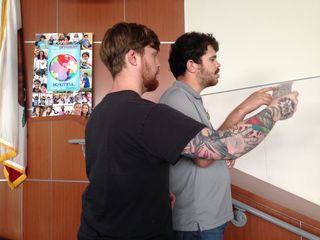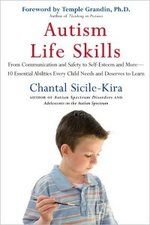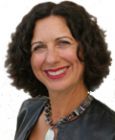
Autism
Communication: An Important Autism Life Skill
Adults with autism have much to say about the importance of communication.
Posted July 29, 2018

“The hardest part of autism is not being able to talk.” – Jeremy Sicile-Kira
Imagine what it must be like to be unable to communicate clearly your wants and needs; this is something most people on the autism spectrum deal with on a regular basis.
Last week I wrote a bit about how making sense of the world - overcoming sensory processing challenges - was the most important area of need cited by all adults interviewed for my book, Autism Life Skills. The ability to communicate was the second most important area. Those who were verbal tended to have more subtle communication challenges than those who were non-verbal, but those challenges were just as important for surviving in a neurotypical world (discussed further down in this blogpost).
If a child does not have an appropriate communication system, he or she will learn to communicate through behavior (ie screaming or throwing a tantrum) which may not be appropriate, but can be effective. Most neurotypical kids start out this way, but eventually pick-up language by imitating what they hear and see.
Many children with autism who are non-verbal have motor challenges that prevent them from using speech It takes around a hundred different muscles in the chest, neck, jaw, tongue, and lips working together to create speech. For autistic children who do not develop speech at the usual developmental level, other forms of communication need to be taught. Otherwise they will develop or continue inappropriate forms of behavior to communicate. Sue Rubin, writer and star of the documentary “Autism is a World,” is a non-verbal autistic college graduate and disability advocate. Sue is one of the first (if not the first) non-verbal autistic student to graduate from high school and then college using typing to communicate her knowledge and understanding of material. She often speaks about the impact of communication on behavior. She shares that as she learned to type she was able to explain to others what was causing her behaviors and to get help in those areas. In high school, typing allowed her to write her own social stories and develop her own behavior plans. As her communication skills increased, her inappropriate behaviors decreased.
More and more non-verbal individuals have been mainstreamed and pursued academic diplomas in high school and some even have gone on to college following Ms. Rubin’s footsteps. Many have authored, or co-authored, books about their experiences including Tito Rajarshi Mukhopadhyay, DJ Savarese, Ido Keydar, Peyton Goddard, my son Jeremy (A Full Life with Autism). Reading the experiences of these authors can help give an understanding of what life is like for them, and how to best support those who are non-verbal. To find out more about the evidence that supports the use of the Rapid Prompting Method, facilitated communication, and similar methodologies that teach individuals with unreliable speech to communicate effectively by typing or pointing to letters on a letterboard, read A Selection of Supportive Peer-Reviewed Publications.
Those who were verbal and on the more functionally able end of the spectrum, tend to have more subtle communication challenges. Many tend to have trouble reading body language and understanding implied meanings and metaphors, which can lead to frustration and misunderstanding. Michael Crouch, the college postmaster at the Crown College of the Bible in Tennessee, credits girls with helping him develop good communication skills. Some of his areas of difficulty were speaking too fast or too low, stuttering and poor eye contact. When he was a teenager, five girls at his church encouraged him to join the choir and this experience helped him overcome some of his difficulties. Having a group of non-autistic peers who shared his interests and provided opportunities for modeling and practicing good communication skills helped Michael become the accomplished speaker he is today.

One of the areas of difficulty in communication expressed by many was not knowing the “hidden curriculum” - expressions and social rules that most of us know and take for granted, but were never taught. Most of us learn these by osmosis and imitating others while we are growing up. Think of what it is like to be traveler in a foreign country where you may have learned the language, but not the rules on how to use that language. For example, I was speaking at a conference once and a young woman with Asperger’s shared with me that as a teenager, she was considered rude and stuck up by her high school classmates. This, she learned years later, was because she never said “thank you” in response to being given a compliment. This was something she had never been directly taught and did not pick up by osmosis. Some of these types of unfortunate and isolating situations can be avoided by teaching the hidden curriculum and rules of expected behavior to children and teens.
There are more available resources to help children and teens to learn how to communicate appropriately now than when Jeremy was a young child. Hopefully, parents and educators reading this have access to them.
References
Sicile-Kira, C (2008). Autism Life Skills: From Communication and Safety to Self-Esteem and More - 10 Essential Abilities Every Child Needs and Deserves to Learn. New York, NY:The Penguin Group

